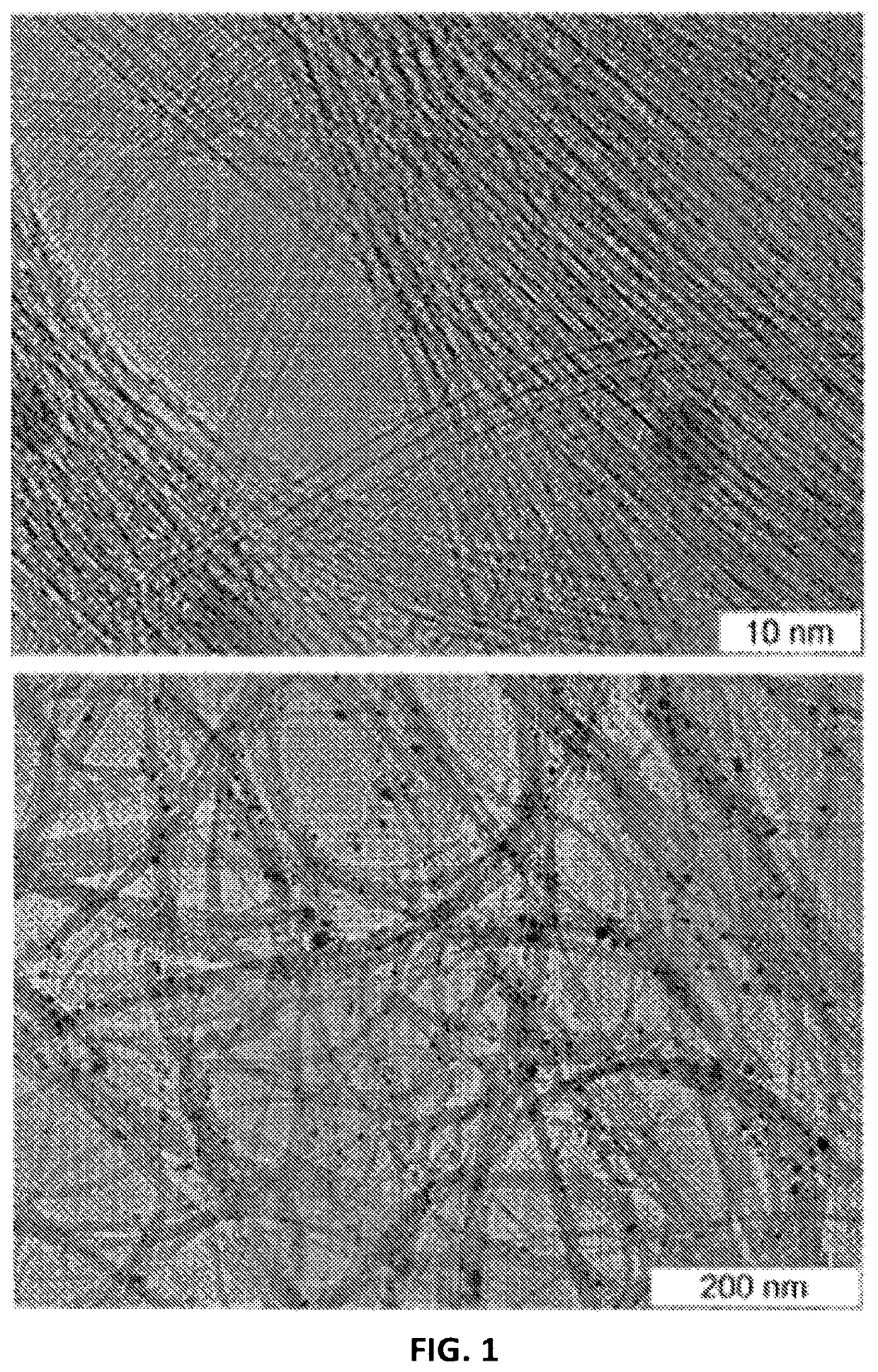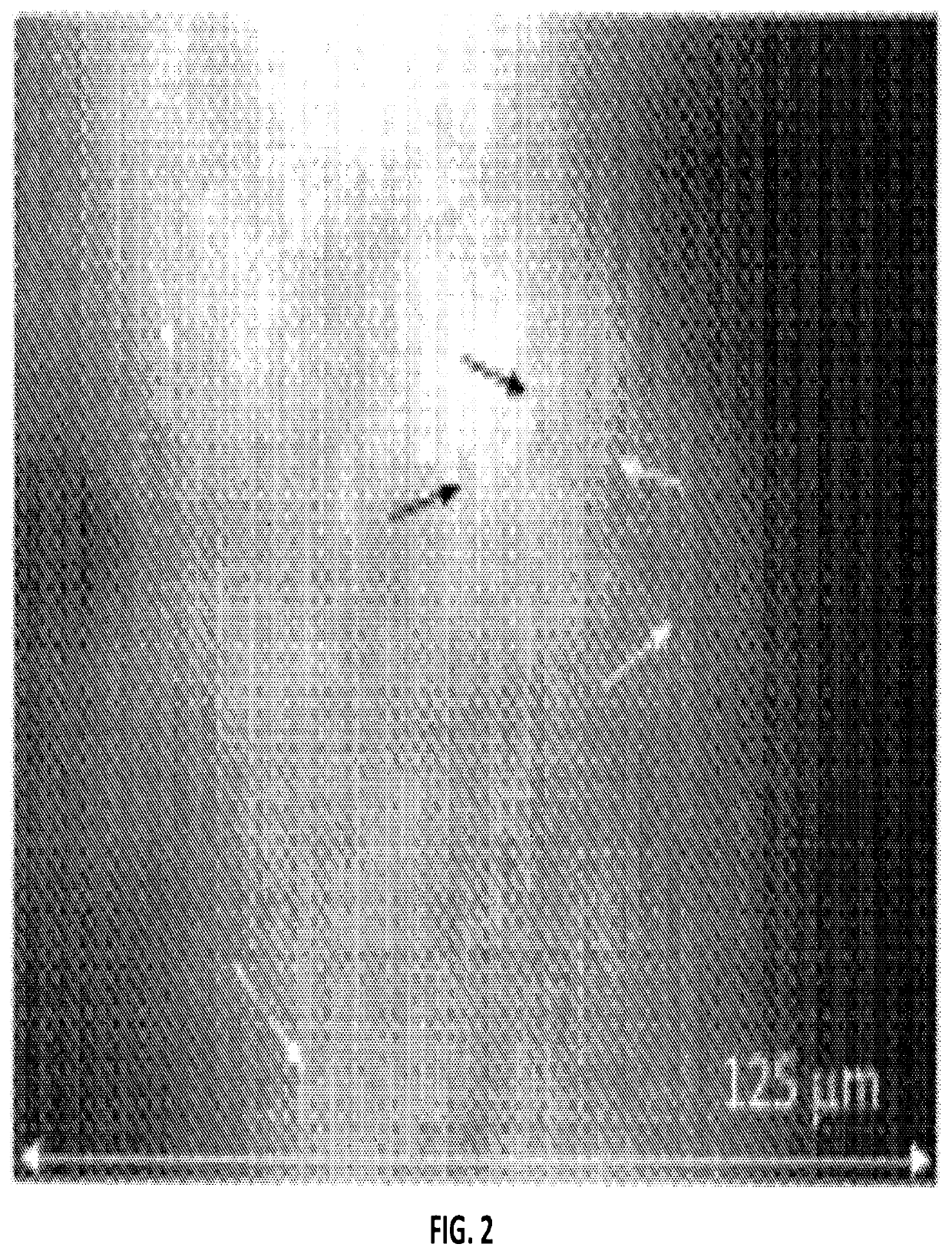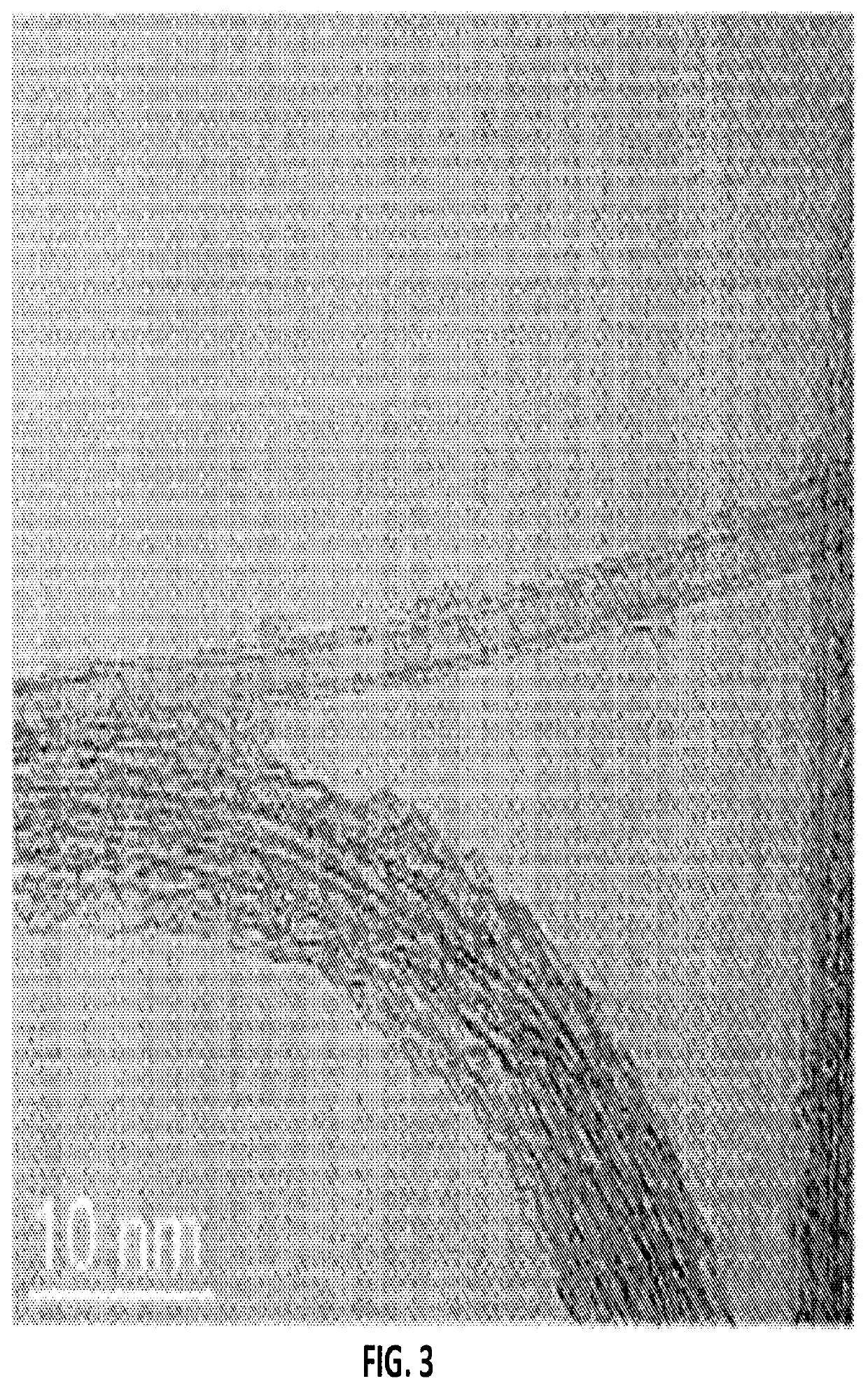Composition for solid tires and a non-marking solid tire
a technology of rubber composition and solid tire, which is applied in the direction of special tyres, transportation and packaging, tyre parts, etc., can solve the problems of high concentration of carbon black or other carbon allotropes in the tread, adverse effects of carbon black addition to the rubber composition, and high undesirable contamination
- Summary
- Abstract
- Description
- Claims
- Application Information
AI Technical Summary
Benefits of technology
Problems solved by technology
Method used
Image
Examples
example 1
[0065]Before curing, the rubber composition contains:[0066](1) mixture of natural rubber NR-CV60 85 parts and butadiene rubber BR9000 (15 parts),[0067](2) oxide fillers and modifiers: precipitated SiO2 Z-155 (50 parts),[0068](3) organic plasticizers and modifiers: naphthenic oil KN4010 5 parts, bis(triethoxysilylpropyl)tetrasulfide (TESPT, Si-69) (5 parts), polyethylene glycol ester (3.5 parts),[0069](4) curing system: sulfur (1 part), stearic acid (2 parts), ZnO (5 parts), tetrabenzylthiuram disulfide (TBzTD) (0.5 parts), sulfenamide C (N-cyclohexyl-2-benzothiazolylsulfenamide, CBS) (2 parts),[0070](5) TUBALL™ single wall carbon nanotubes (0.38 parts).
[0071]Carbon allotropes other than carbon nanotubes are present as TUBALL™ impurities (0.02 parts). The transmission electronic micrographs of the single wall carbon nanotubes used are shown in FIG. 1. No other carbon allotropes were added to the rubber composition, although a small amount (about 5 wt. %) of amorphous carbon and graph...
example 2
[0075]A rubber composition similar to Example 1, although with 0.05 phr of the TUBALL™ single wall carbon nanotubes and additional 0.9 phr of the KetjenBlack EC-300J electrically conductive carbon black. The electrical conductivity and surface electrical resistivity of the rubber composition after curing are summarized in Table 1. The data in the table indicate that the rubber composition from Example 2 is electrically conductive and can dissipate the static electricity charge. The rubber composition from Example 2 does not meet the requirements of EN 1755 and cannot be used for the tires operated in potentially explosive atmospheres. However, the rubber composition from Example 2 can be used for the tires operating in rooms not imposing such restrictions.
example 3
[0076]A rubber composition similar to Example 1, although with 0.24 phr of mixed single wall and double wall carbon nanotubes with a significant amount of fullerene-like carbon and 0.25 phr of the VULCAN® XC-72 by Cabot carbon black instead of 0.19 phr of the TUBALL™ single wall carbon nanotubes. The transmission electronic micrographs of the single wall and double wall carbon nanotubes used are shown in FIG. 3. The transmission electronic micrographs of a cured rubber mixture chip are shown in FIG. 4. The electrical conductivity and surface electrical resistivity of the rubber composition after curing are summarized in Table 1. The data in the table indicate that the rubber composition from Example 3 is electrically conductive and can dissipate the static electricity charge.
PUM
| Property | Measurement | Unit |
|---|---|---|
| thickness | aaaaa | aaaaa |
| specific volume conductivity | aaaaa | aaaaa |
| specific volume conductivity | aaaaa | aaaaa |
Abstract
Description
Claims
Application Information
 Login to View More
Login to View More - R&D
- Intellectual Property
- Life Sciences
- Materials
- Tech Scout
- Unparalleled Data Quality
- Higher Quality Content
- 60% Fewer Hallucinations
Browse by: Latest US Patents, China's latest patents, Technical Efficacy Thesaurus, Application Domain, Technology Topic, Popular Technical Reports.
© 2025 PatSnap. All rights reserved.Legal|Privacy policy|Modern Slavery Act Transparency Statement|Sitemap|About US| Contact US: help@patsnap.com



